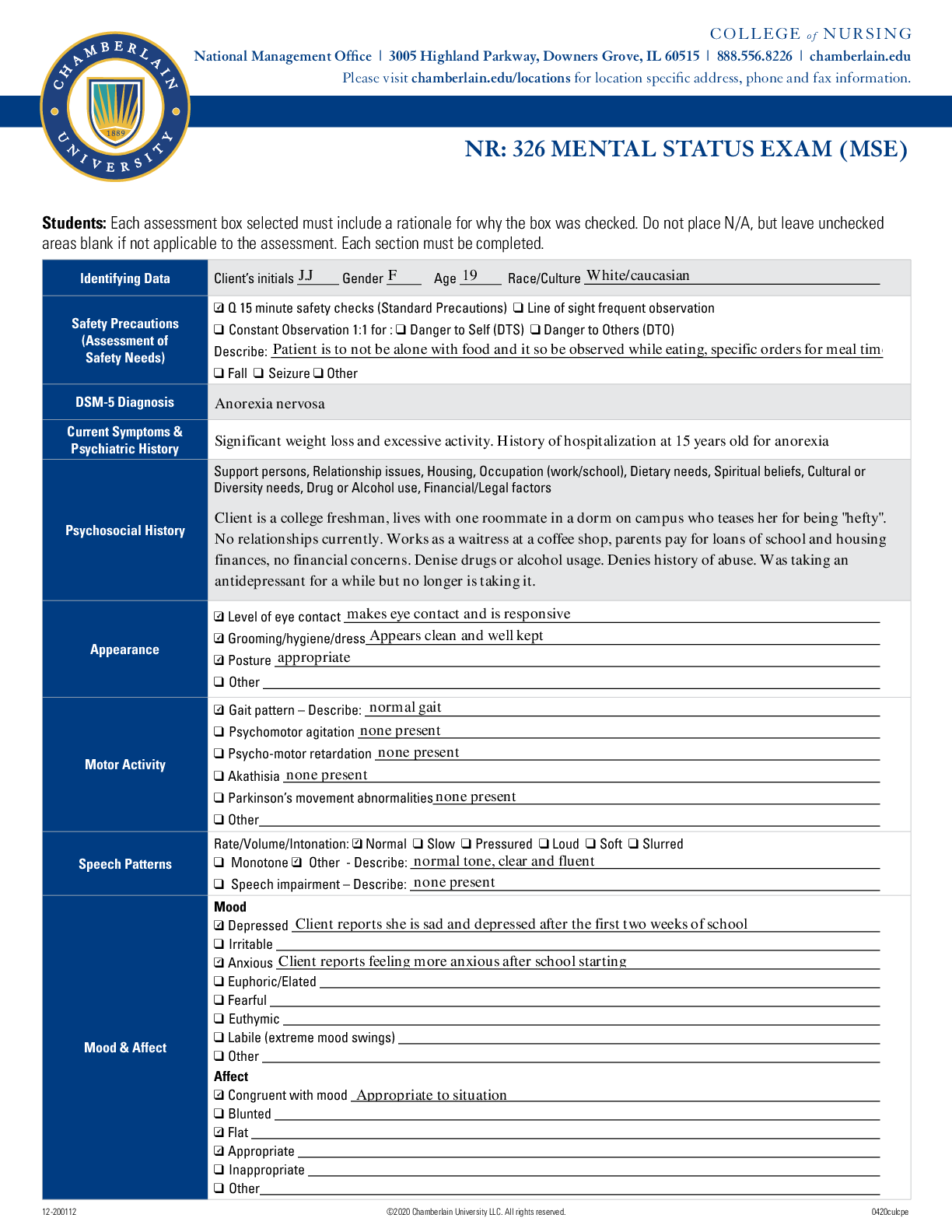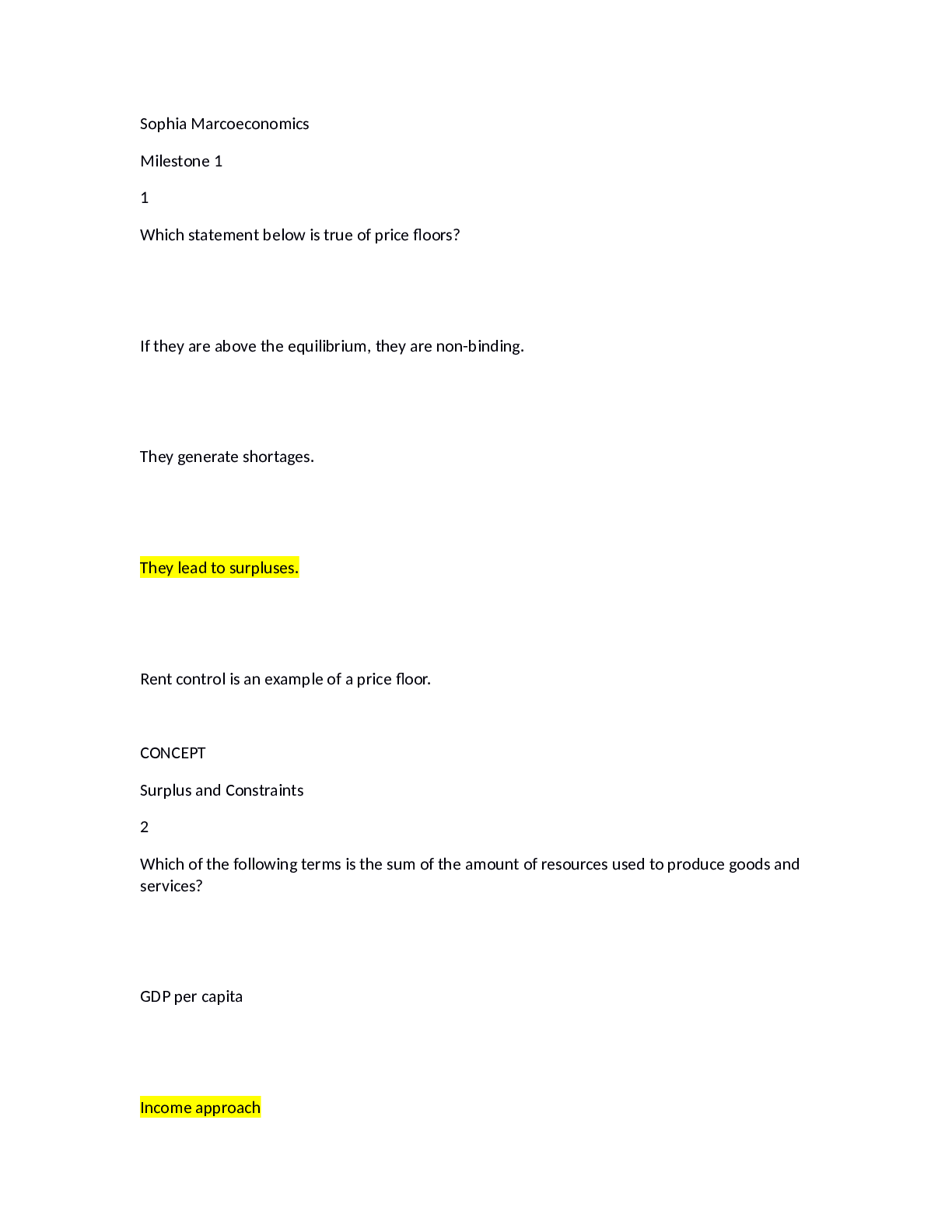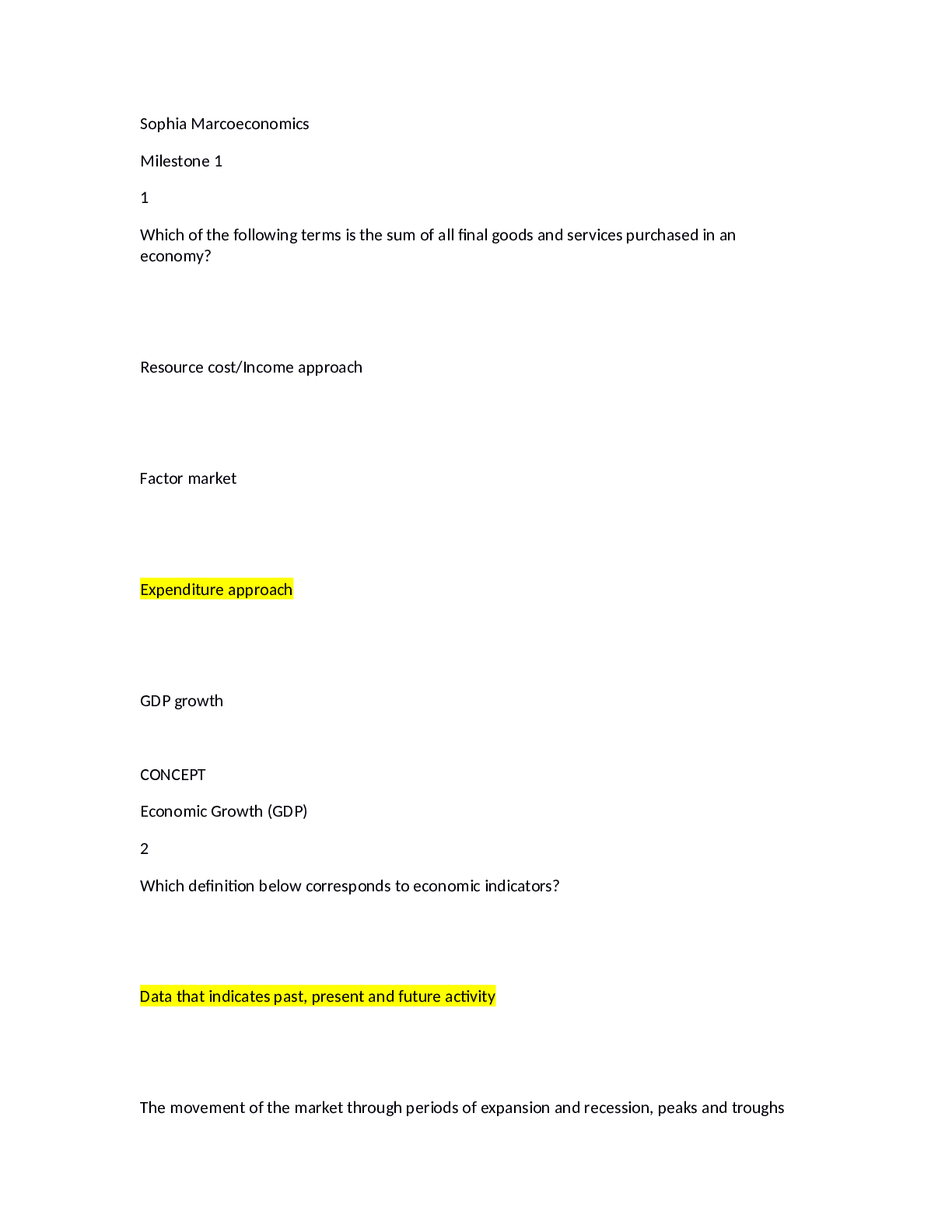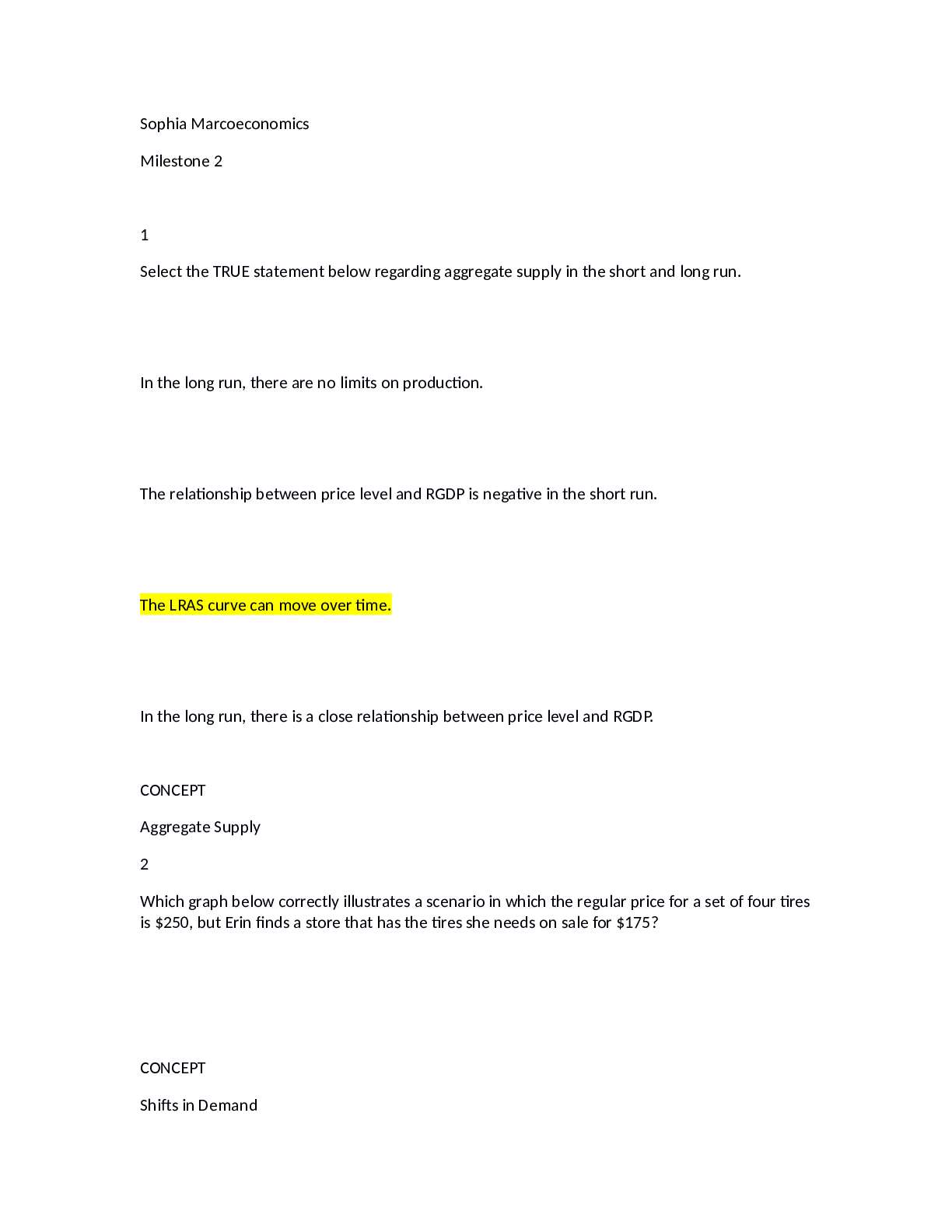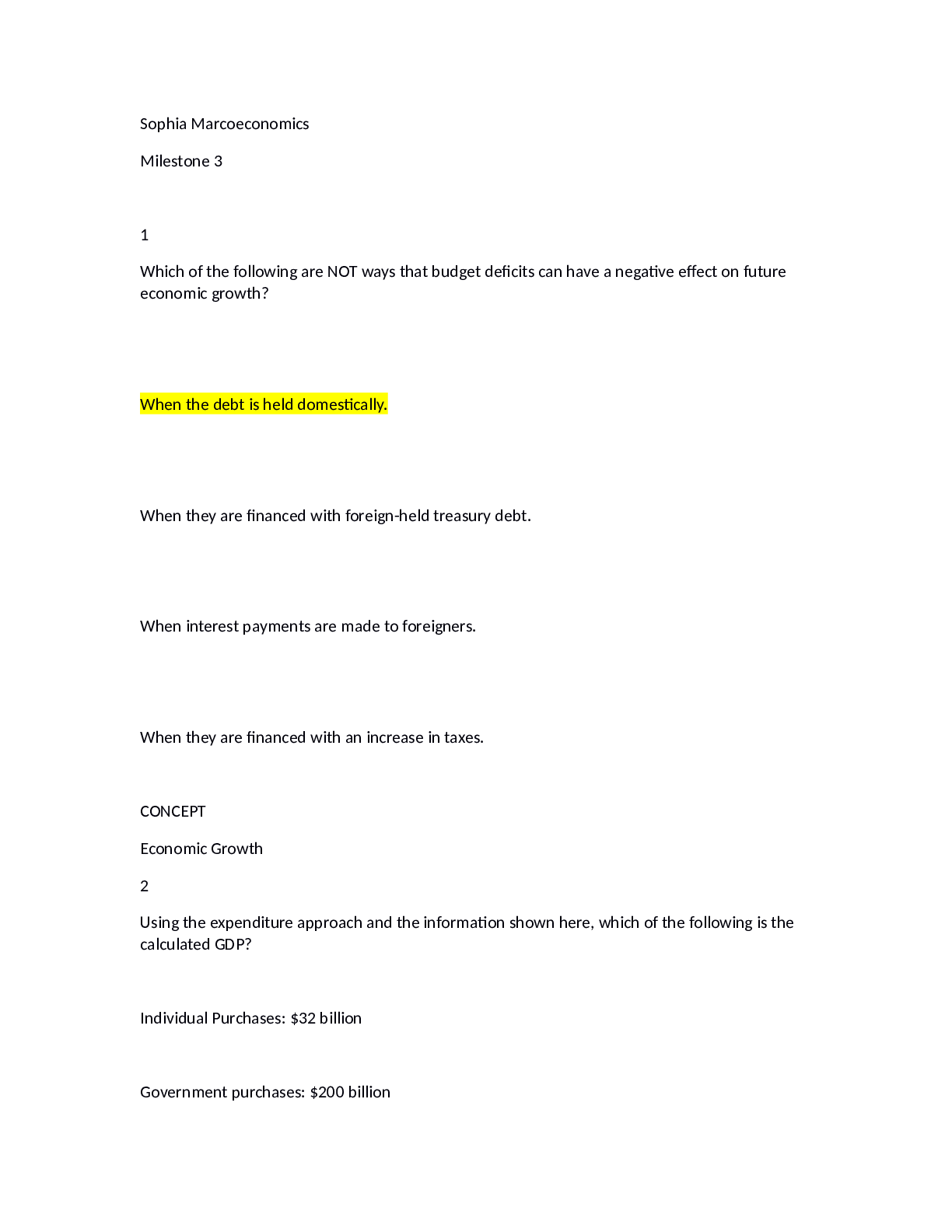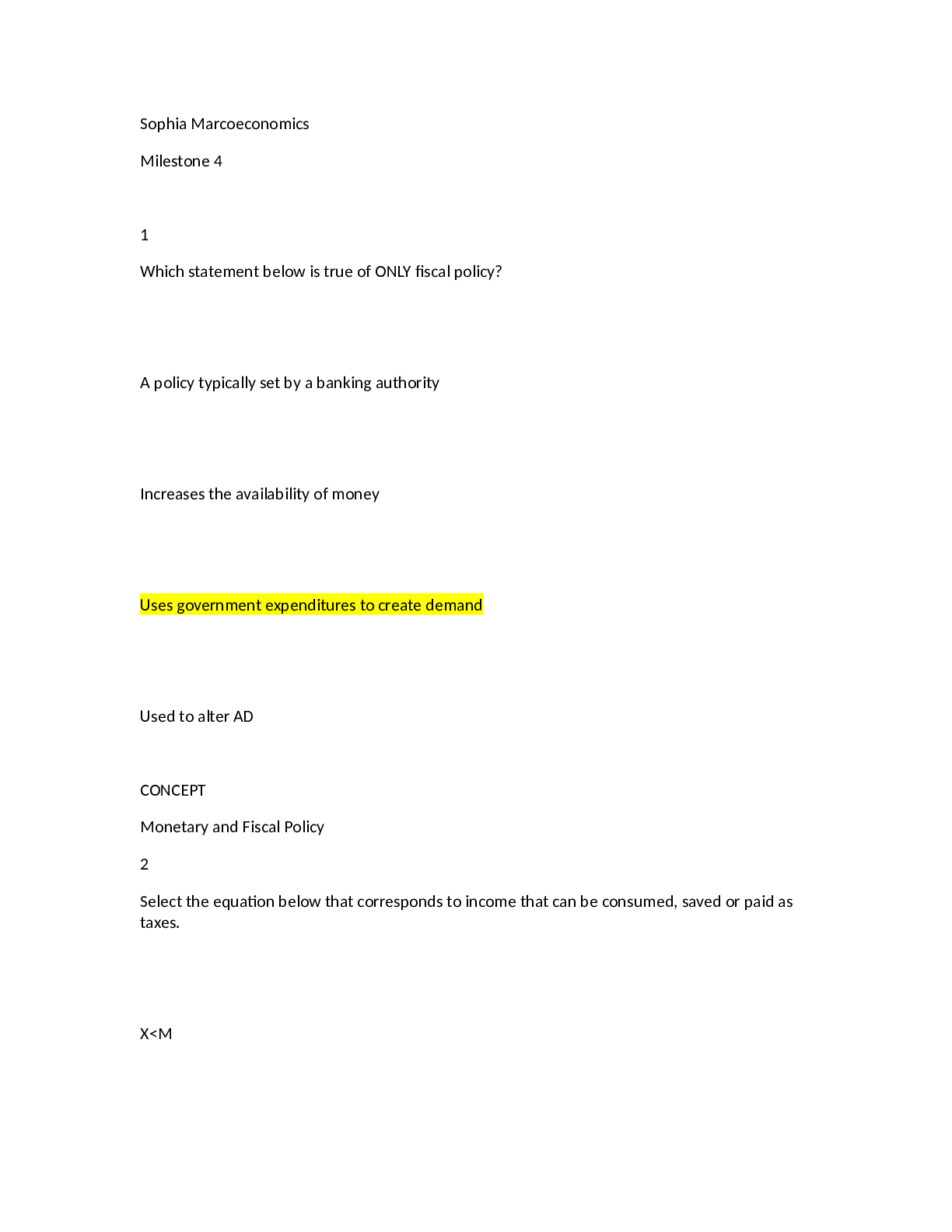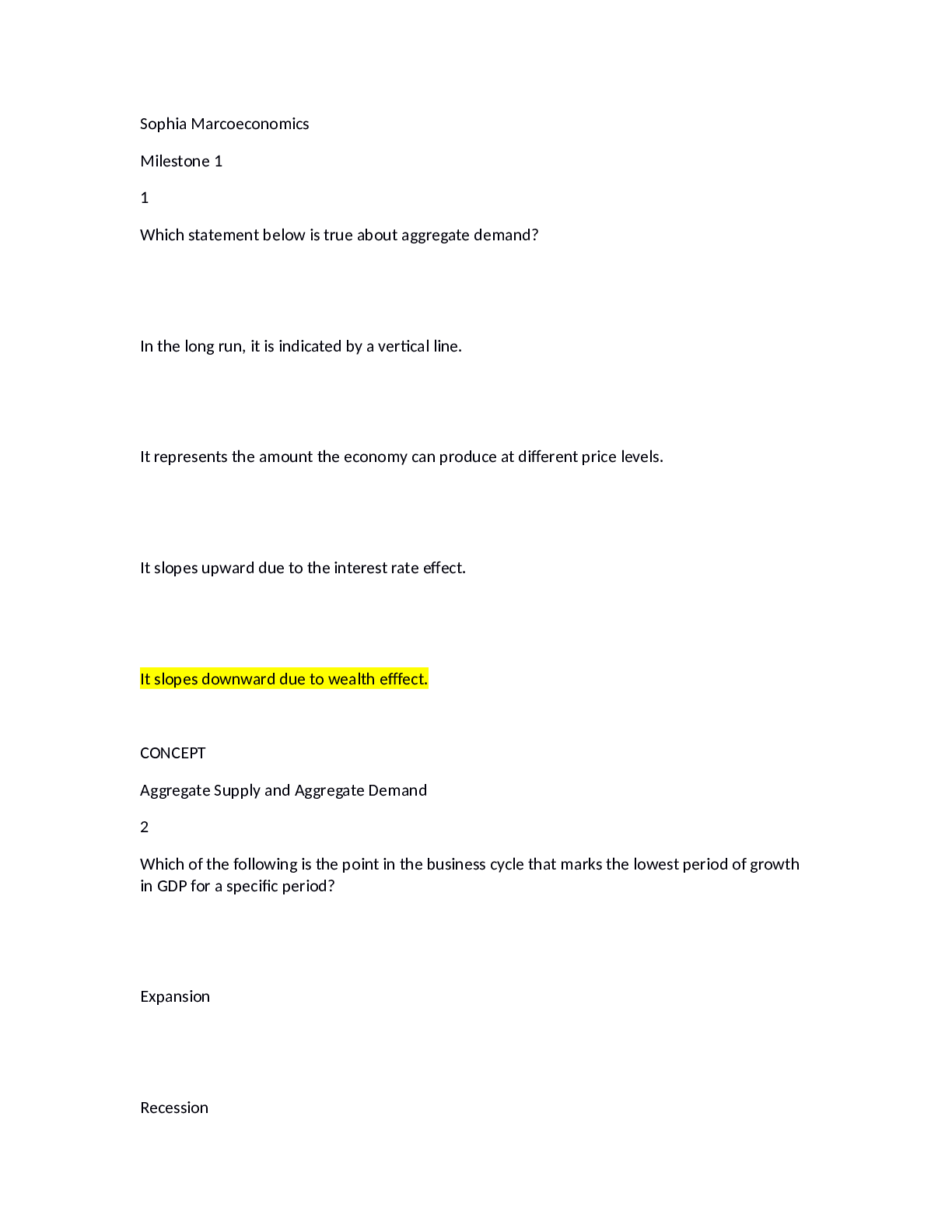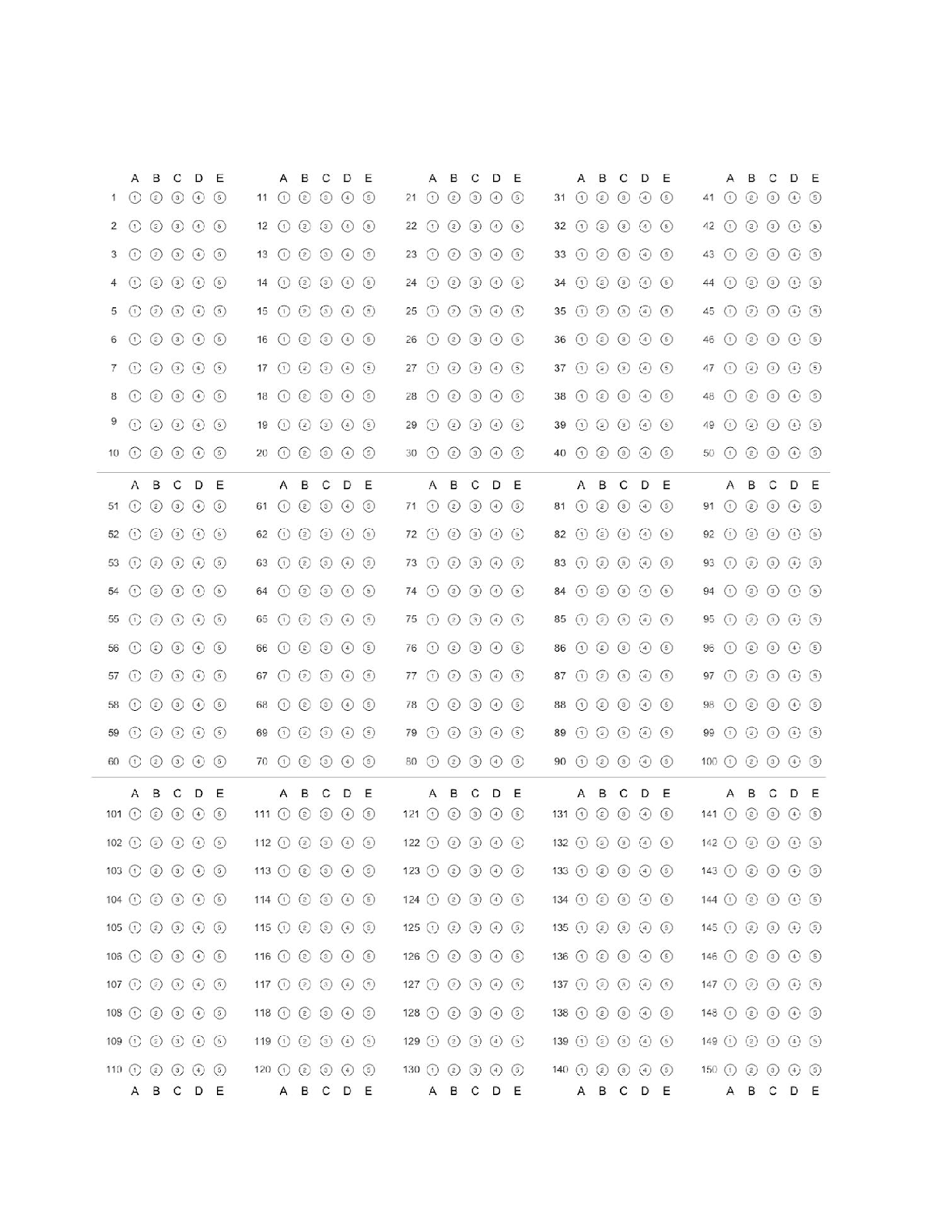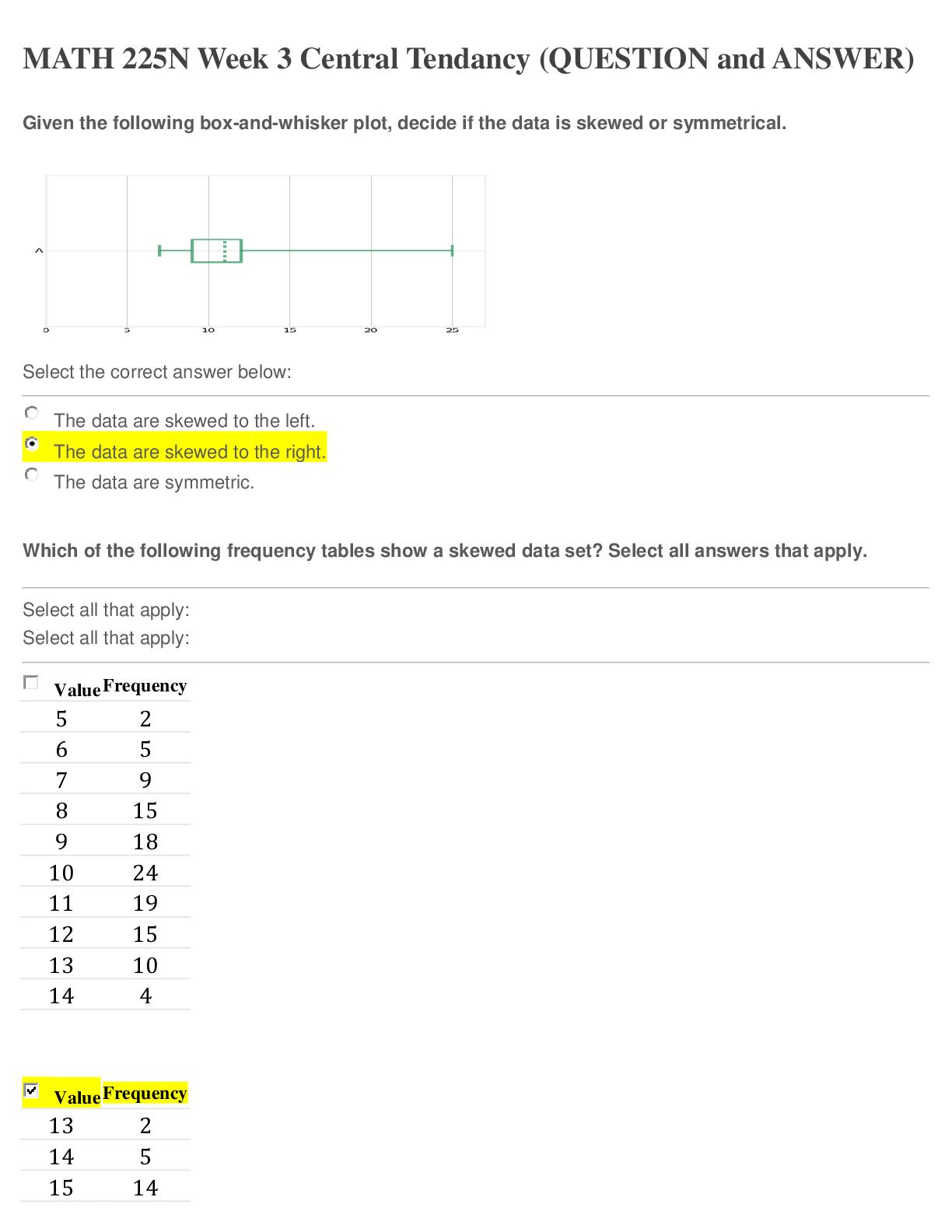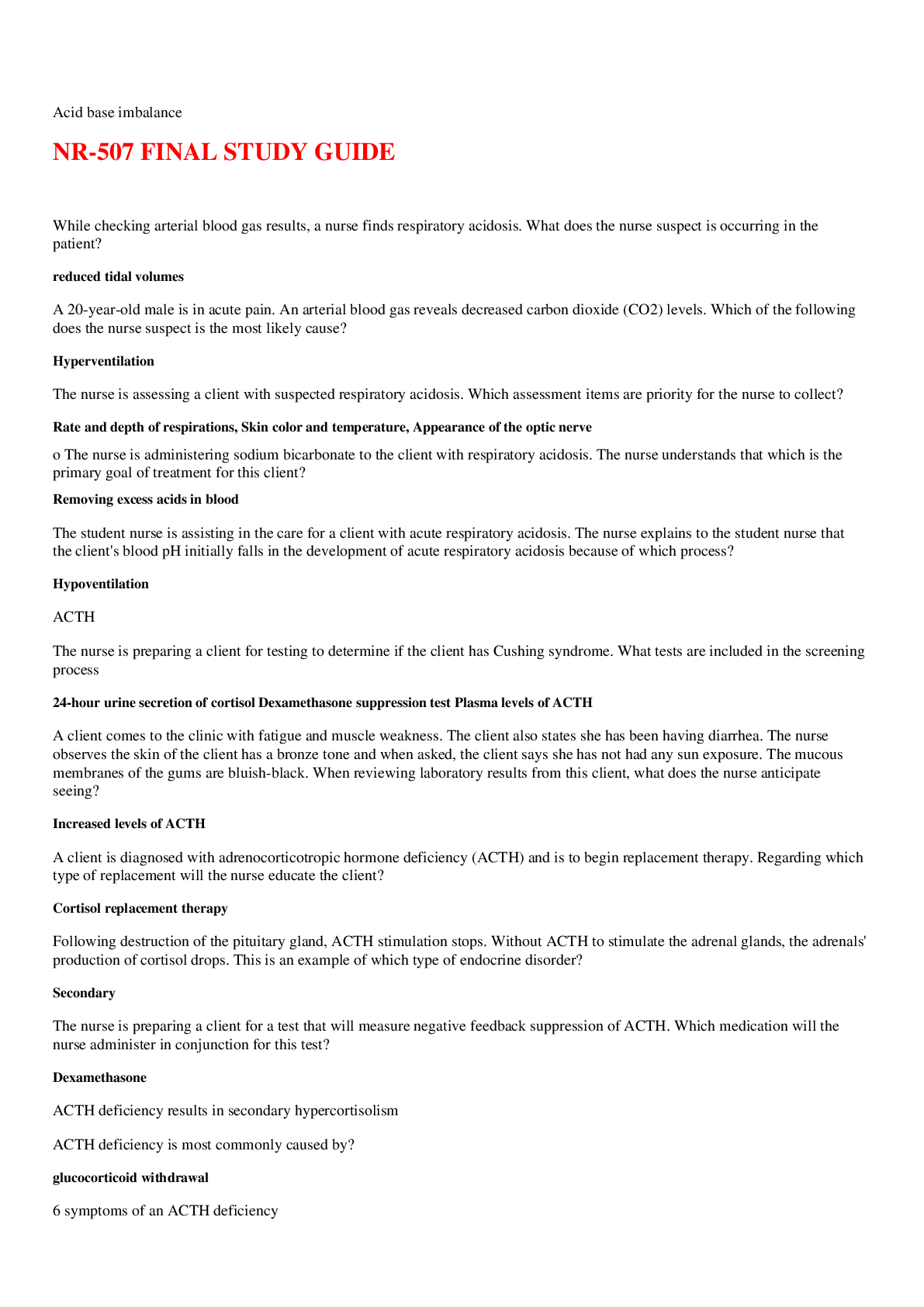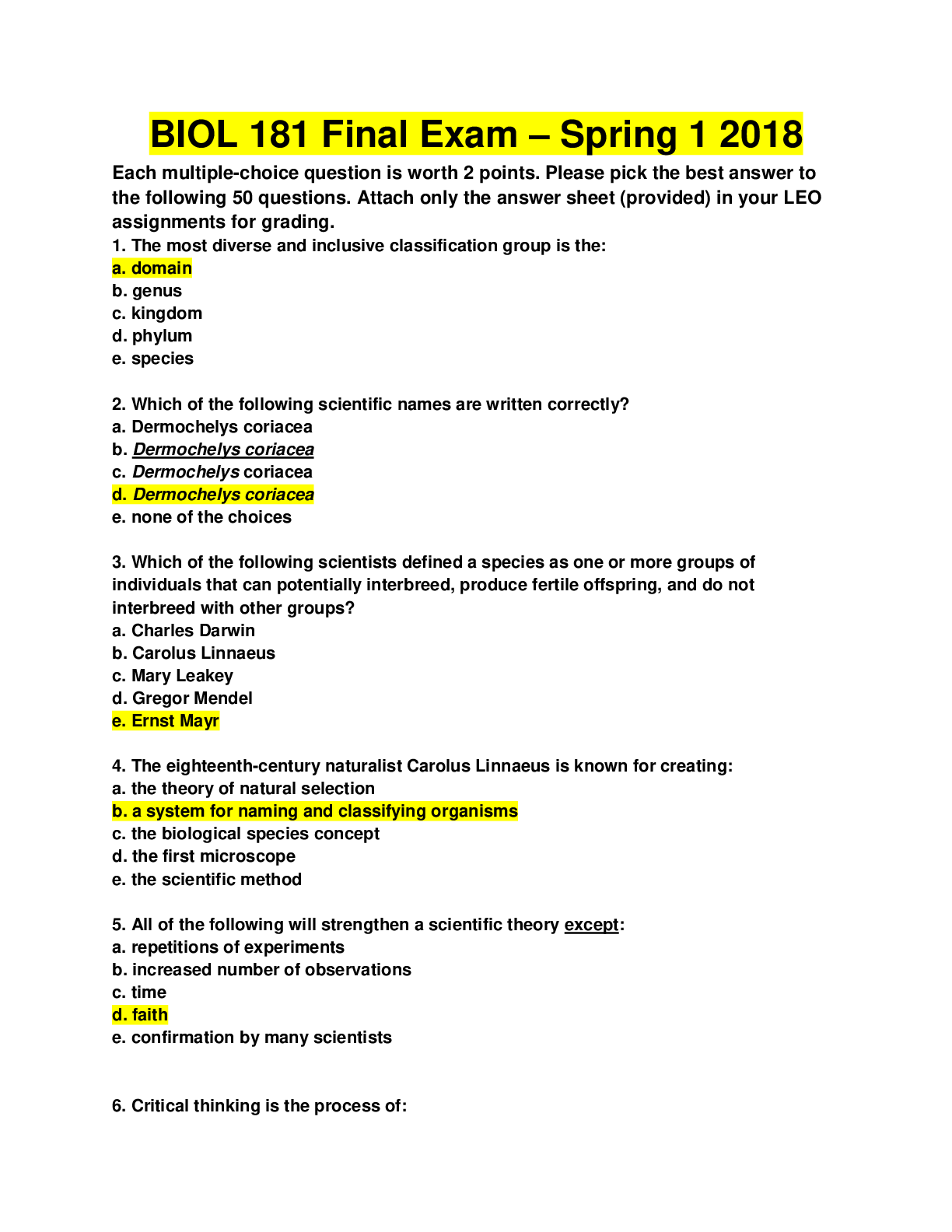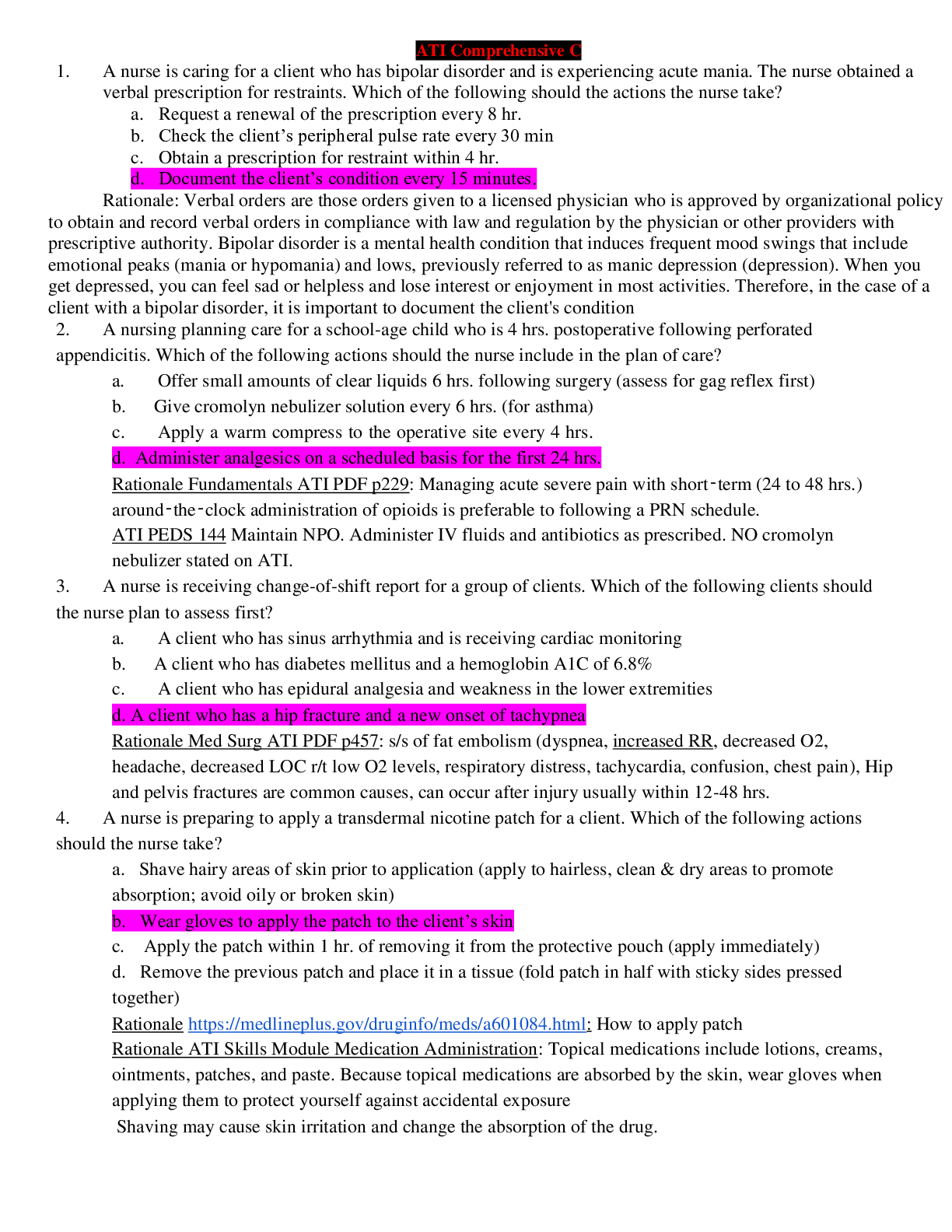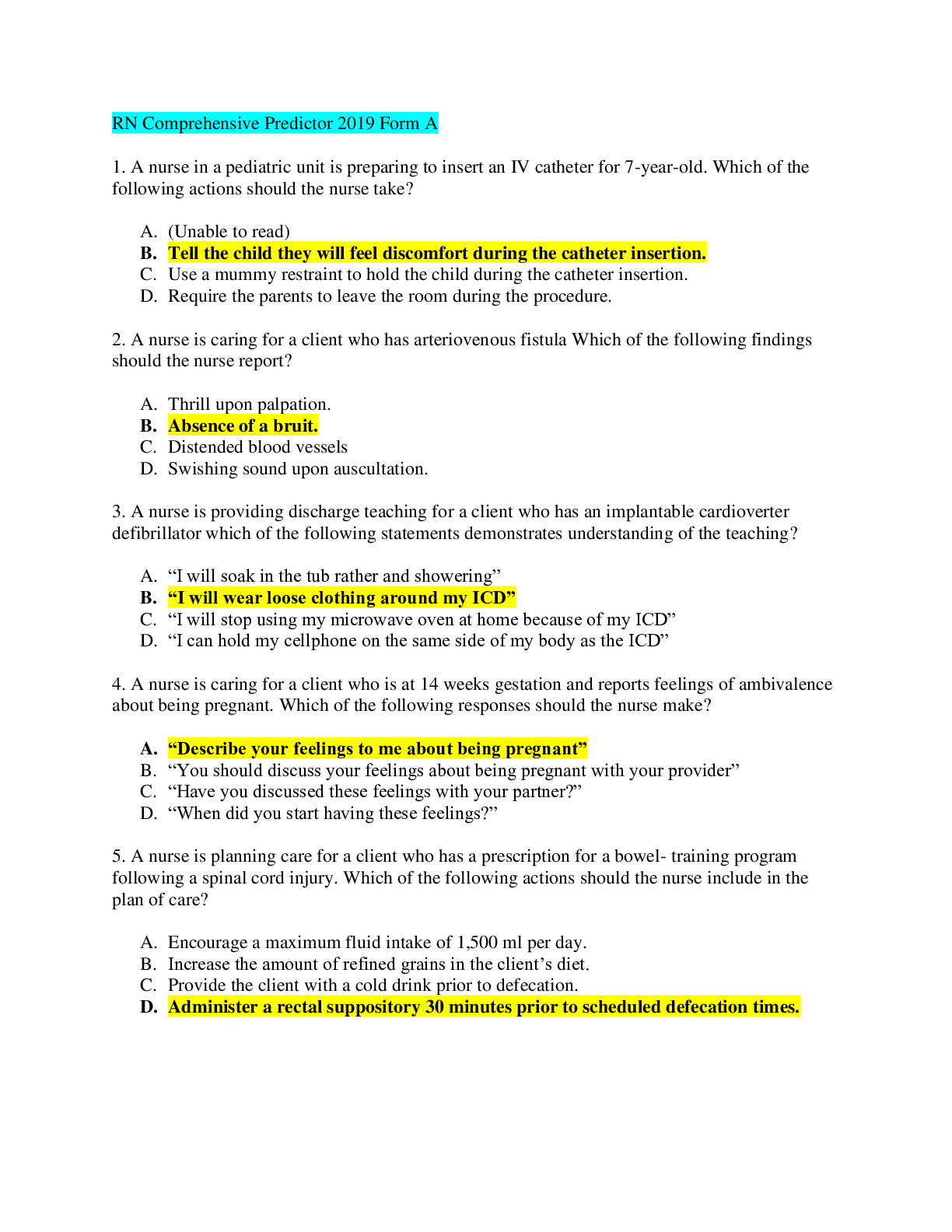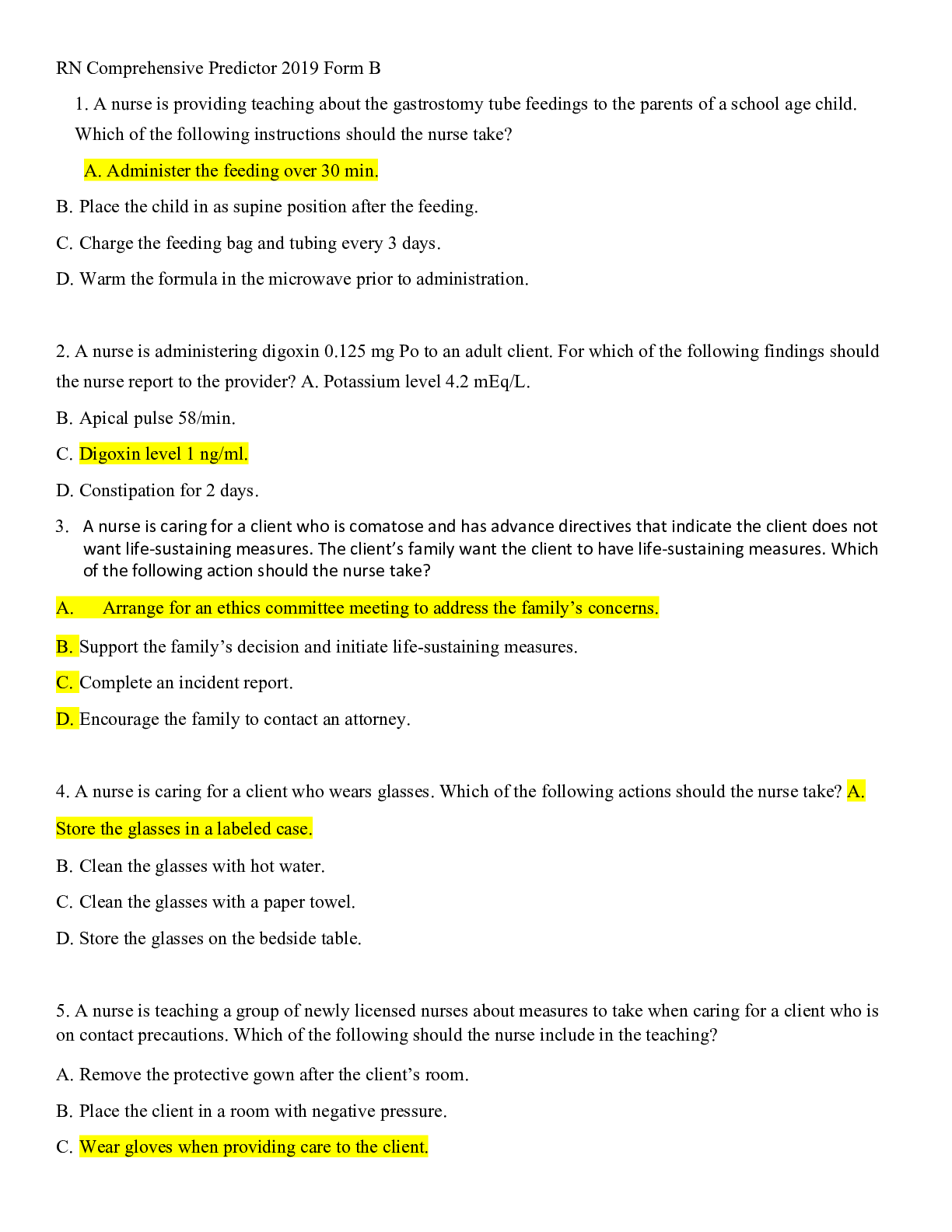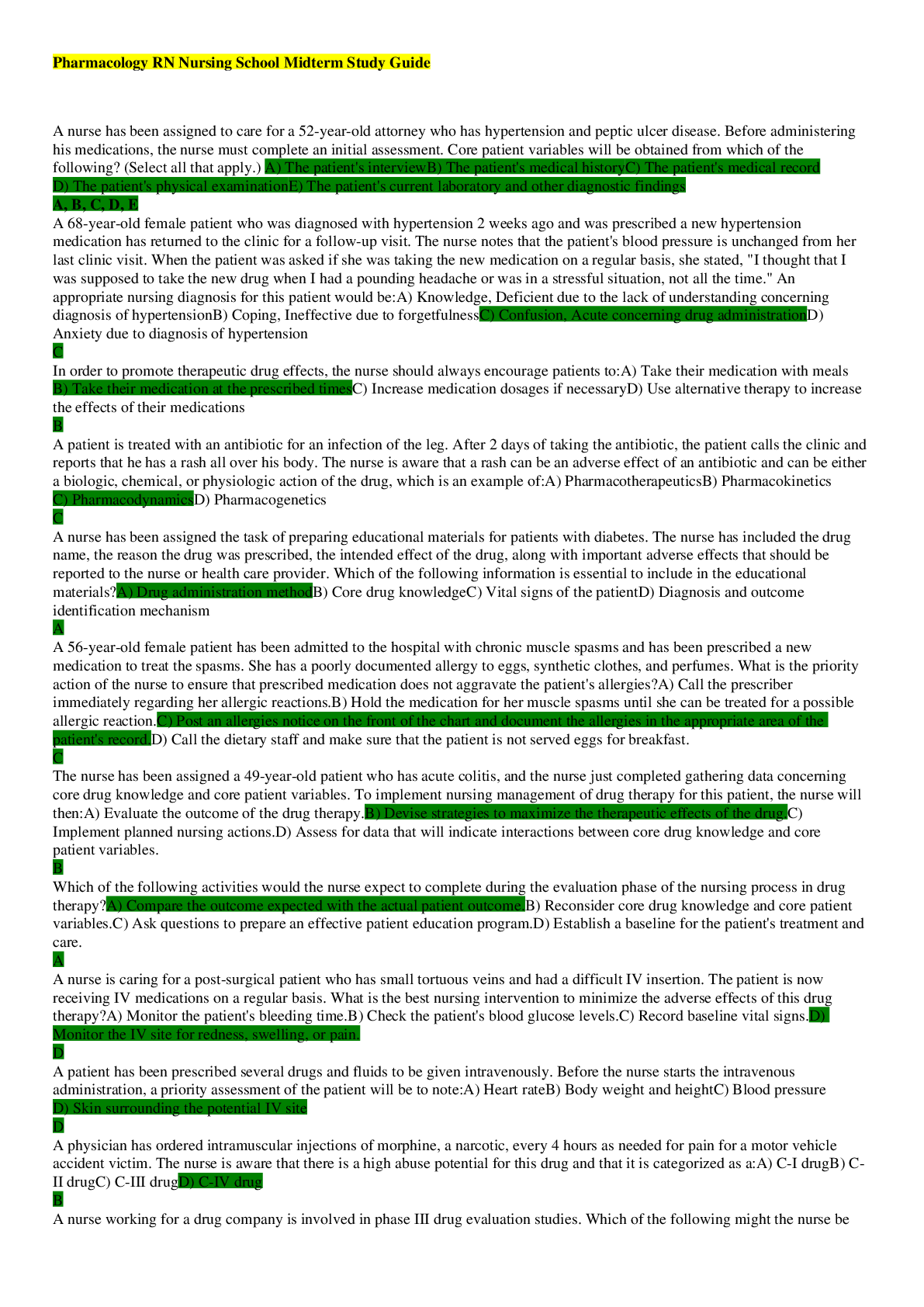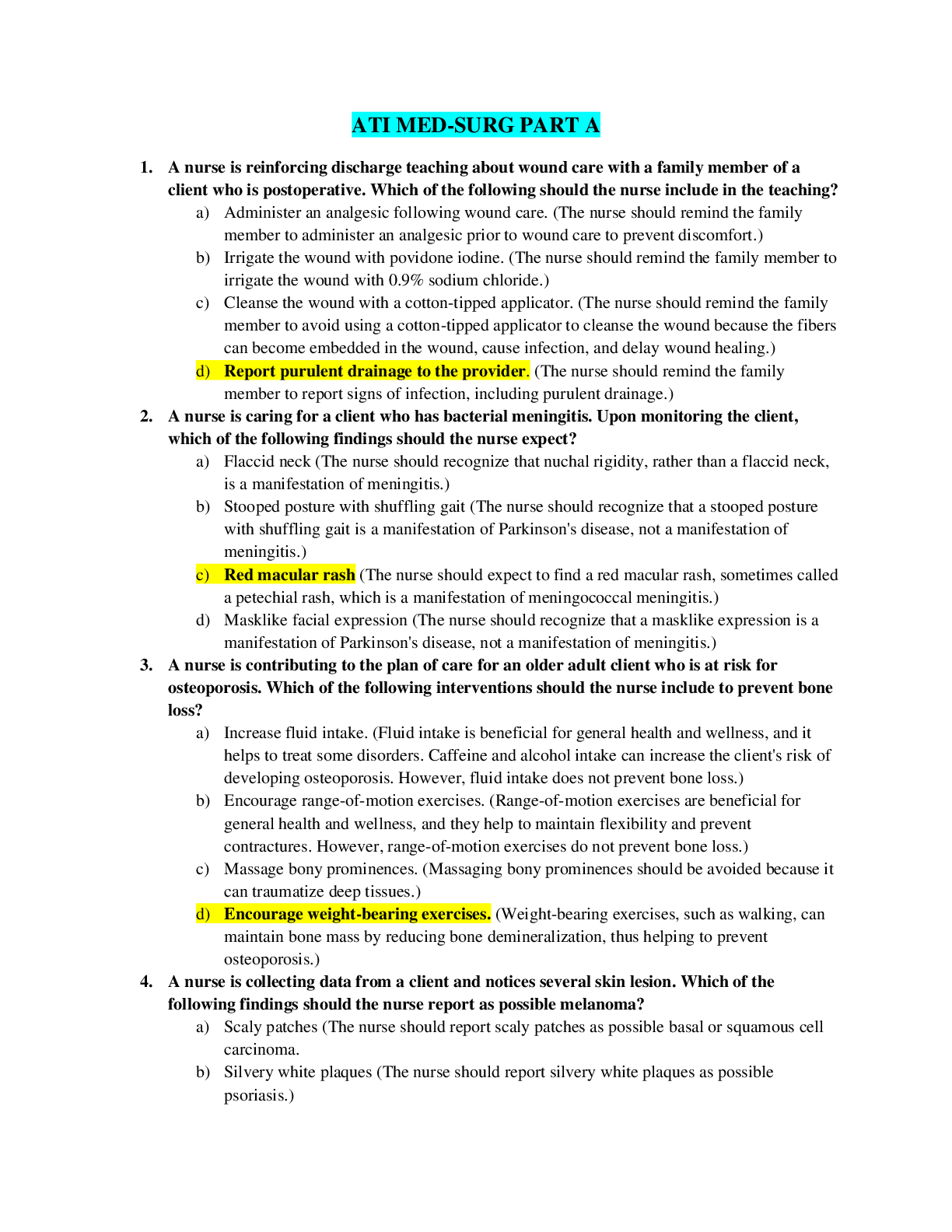Stony Brook University ATM 102 Final Version 1 (Questions and Answers)
Document Content and Description Below
ATM 102/EST 102 -Weather & Climate Final – May 22, 2013 VERSION 1 Page 1 Name: ____________________________ SBU Spring 2013 ID # : ________________________ MULTIPLE CHOICE: Choose the answer th... at best answers the question. Hand in BOTH the test and the SCANTRON (Name and ID#) Part 1: Chapters 1-6 (30 Questions) CHAPTER 1 1. Which of the following components in the atmosphere is most important in affecting weather phenomena? A) Nitrogen B) oxygen C) water vapor D) ozone 2. One would expect that the current pressure at Stony Brook is _____ than the pressure at Mount Elbert in Colorado (highest point in the lower 48 states). A) lower than B) higher than C) about the same as D) none of these 3. The four thermal layers of the atmosphere in order beginning from the surface are: A) troposphere, stratosphere, mesosphere, thermosphere B) mesosphere, stratosphere, thermosphere, troposphere C) thermosphere, stratosphere, mesosphere, troposphere D) stratosphere, troposphere, mesosphere, thermosphere 4. Which one of the following is the SECOND MOST abundant gas in the atmosphere? A) hydrogen B) oxygen C) nitrogen D) argon E) carbon dioxide 5. Essentially all important weather phenomena occur in the: A) troposphere B) stratosphere C) ionosphere D) heterosphere CHAPTER 2 6. The date of the highest sun angle and greatest length of daylight at Stony Brook (41º N) is: A) September 22 B) December 21 C) March 21 D) June 21 ATM 102/EST 102 -Weather & Climate Final – May 22, 2013 VERSION 1 Page 2 7. Earth is closest to the Sun during: A) Northern hemisphere autumn. B) Southern hemisphere autumn. C) Southern hemisphere winter. D) Northern hemisphere winter. E) Northern hemisphere summer. 8. The 90 degrees angle rays strike the Tropic of Cancer on: A) June 21. B) March 21. C) September 22. D) December 21. E) July 4. 9. Which of the following is the primary reason for seasonal temperature change? A) Changes in distance of the Earth from the Sun. B) Changes in sun angle and length of daylight. C) Changes in the tilt of the Earth’s axis. D) All of the above. 10. What is the difference between advection and convection? A) Advection is vertical circulation, convection is horizontal. B) Convection is vertical circulation, advection is horizontal C) Convection is the same as conduction, whereas advection is the same as radiation. D) Advection is the same as conduction, whereas convection is the same as radiation. Chapter 3 11. An isotherm on a map: A) connects points of equal temperature. B) represents the coldest place on the map. C) represents the warmest place on the map. D) identifies all places that have the same annual mean temperature. 12. Generally, the warmest months of the year in the Northern Hemisphere (like on Long Island) are: A) the summer solstice: June B) the fall equinox: September C) September and October D) July and August 13. The annual temperature range is quite small near the equator. This is true primarily because: A) solar radiation is nearly uniform all year. B) the earth emits more infrared energy at these locations. C) the elevation of most land areas there is near sea level. D) Wind speeds always tend to be low. ATM 102/EST 102 -Weather & Climate Final – May 22, 2013 VERSION 1 Page 3 14. Temperatures at the Earth's surface tend to DECREASE when solar radiation: A) is less than Earth's longwave radiation. B) exceeds Earth's longwave radiation. C) is equal to Earth's longwave radiation. D) is increasing. 15. What time does the local minimum temperature usually occurs? A) The mid to late afternoon. B) Midnight local time. C) 2-3 hours before sunrise. D) Just after sunrise. CHAPTER 4 16. Saturation is best defined as: A) a mixing ratio of at least 100 g kg -1. B) a vapor pressure greater than 1000 mb. C) the point when water molecules completely stop evaporating from a water surface. D) equal numbers of water molecules evaporating from and condensing into a water surface. 17. In which phase do water molecules have the lowest kinetic energy? A) vapor B) liquid C) Ice D) It has the same kinetic energy in all three phases 18. If the air temperature remains constant, evaporating water into the air will ________ the dew point and ________ the relative humidity. A) increase, decrease B) not change, increase C) decrease, increase D) decrease, decrease E) increase, increase. 19. What is the name of the instrument used to measure relative humidity? A) Barometer B) Psychrometer C) Anemometer D) Rain Gauge 20. The temperature of a rising air parcel decreases because the air has: A) lost heat to the colder air at higher altitudes. B) expanded to a larger volume. C) been compressed. D) emitted infrared radiation. ATM 102/EST 102 -Weather & Climate Final – May 22, 2013 VERSION 1 Page 4 CHAPTER 5 21. Clouds are classified and named according to their altitude and: A) temperature. B) water content. C) size of droplets in the cloud. D) form or appearance. E) amount of precipitation produced. 22. The most common way for air to be cooled in order for a cloud to form is by: A) sinking and contracting. B) emitting radiation. C) evaporating water. D) rising and expanding. E) reflecting radiation. 23. When warm moist air moves over a cold surface, ________ fog may result. A) steam B) advection C) radiation D) precipitation E) upslope 24. Radiation fogs most commonly occur: A) In the mid-late afternoon on windy days. B) Just after sunrise when it’s cloudy. C) When there are light winds and cloudy skies. D) In the mid to late afternoon when skies are clear. E) None of the above. 25. Supercooled water ________. A) is a special form of ice B) is water in the liquid state below 0°C C) has a slightly different chemical composition from that of ordinary water D) is produced from dry ice [Show More]
Last updated: 1 year ago
Preview 1 out of 22 pages
Instant download
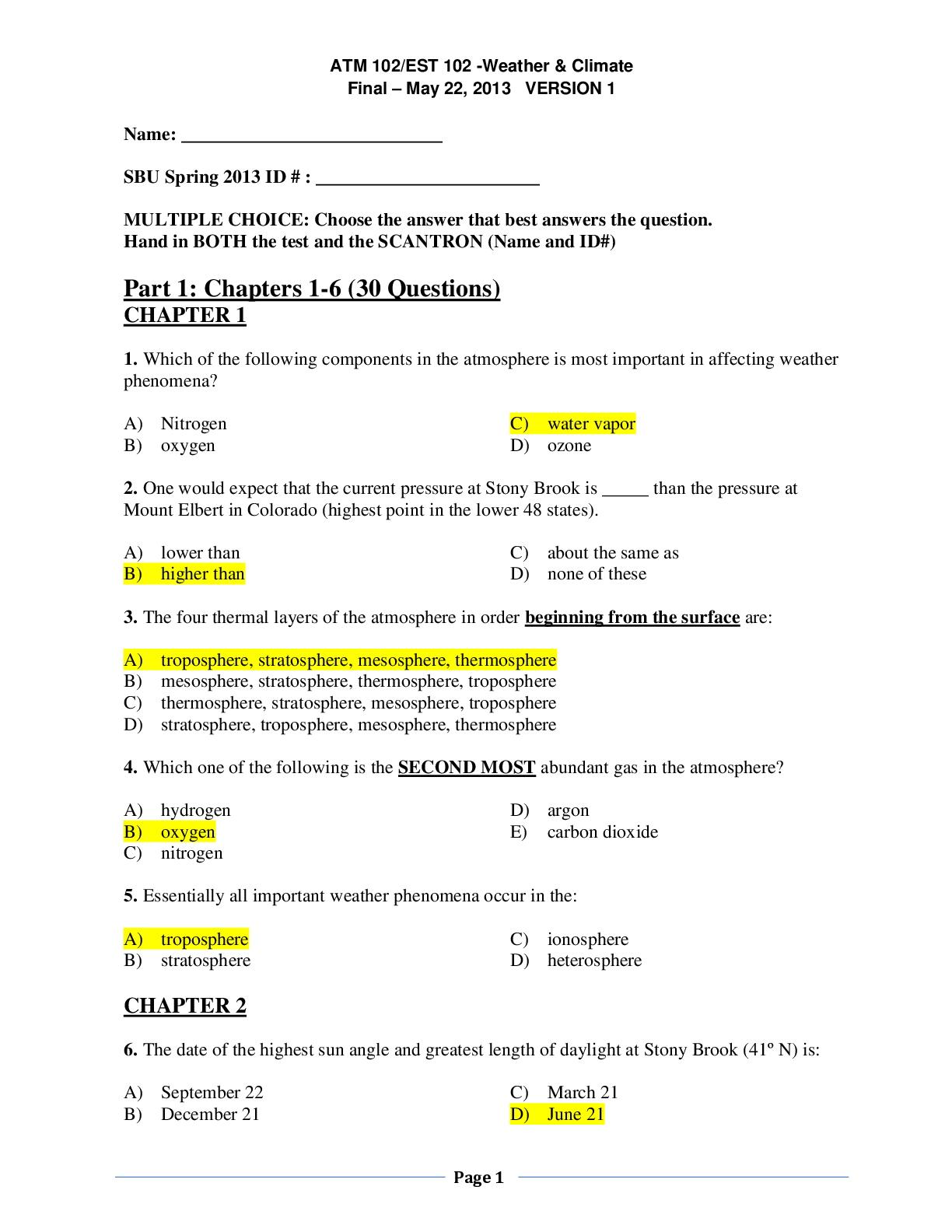
Buy this document to get the full access instantly
Instant Download Access after purchase
Add to cartInstant download
Reviews( 0 )
Document information
Connected school, study & course
About the document
Uploaded On
Nov 10, 2022
Number of pages
22
Written in
Additional information
This document has been written for:
Uploaded
Nov 10, 2022
Downloads
0
Views
53

